Beer has been a cornerstone of human culture and tradition for centuries, offering a unique experience that transcends mere refreshment. Understanding the intricate beer processes that transform raw ingredients into a refreshing beverage can be both fascinating and educational. From the initial brewing process to the meticulous fermentation stages, each step plays a vital role in crafting a beer that delights the senses. Whether you’re a casual drinker or someone who appreciates the artistry behind brewing, delving into the beer-making process reveals the science, craftsmanship, and history that make every sip worthwhile. This exploration dives into the key stages, from malting and brewing to fermentation and aging, providing insights into what makes beer one of life’s great pleasures.
Key Takeaways
– Malting transforms barley into sugars, laying the foundation for beer’s sweetness and body.
– Boiling sterilizes the mixture, removes impurities, and introduces hops for bitterness and aroma.
– Fermentation harnesses yeast to convert sugars into alcohol and carbon dioxide, shaping the beer’s flavor and aroma.
– Conditioning/Maturation enhances clarity, stability, and mouthfeel, ensuring a premium drinking experience.
– Packaging ensures freshness and preservation, making beer accessible to a wide audience.
These steps ensure consistency, quality, and flavor, driving innovation in the craft beer industry.
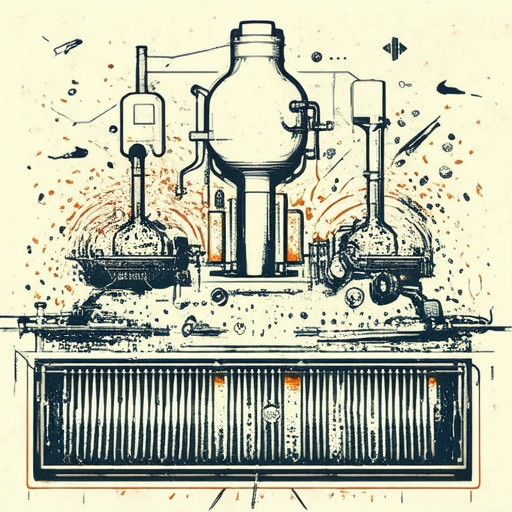
Key Steps in the Beer-Making Process
The beer-making process, often referred to as brewing, involves several critical steps that transform raw materials into a refreshing beverage. Here’s a breakdown of the primary stages:
- Malt Preparation :
- Malt, typically made from barley, undergoes germination and kilning to convert starches into fermentable sugars. Different roasting levels result in varied flavors, from subtle to robust.
- Boiling :
- Malted grains are boiled with water to extract sugars and flavors. Hops are added during this stage to introduce bitterness and aromatic compounds, contributing to the beer’s balance.
- Fermentation :
- Yeast is introduced to convert the sugars into alcohol and carbon dioxide. The type of yeast used can significantly influence the beer’s character, ranging from fruity to earthy profiles.
- Conditioning :
- After fermentation, beer undergoes conditioning, often involving cold storage to clarify it and enhance its mouthfeel. This step also reduces foaming and prepares the beer for packaging.
- Packaging :
- Beer is packaged in various forms, including bottles, cans, or kegs, depending on its intended market and consumption setting. Freshness and preservation are key considerations during this phase.
Each step plays a vital role in ensuring the final product meets taste, aroma, and visual standards, making the beer-making process both art and science.
Essential Steps in the Beer-Making Process
The beer-making process, also known as brewing, involves several critical steps to transform raw ingredients into a refreshing beverage. Below is a breakdown of the essential stages:
- Maltting :
The process begins with malted grains, typically barley, which undergo germination and kilning to develop their flavor and color. Malt provides the sugars and enzymes needed for fermentation. - Mashing :
In this stage, crushed malt is mixed with hot water to break down the starches into sugars. This process, known as mashing-in, creates a sugary liquid called wort. - Boiling :
The wort is boiled to remove impurities and dissolve desirable compounds. Hops are added during this stage to provide bitterness and flavor. After boiling, the solution is cooled to a specific temperature for the next step. - Fermentation :
Yeast is introduced to convert the sugars into alcohol and carbon dioxide. This phase typically lasts around 7-14 days, during which the yeast metabolizes and the beer’s flavors develop. - Conditioning :
After fermentation, the beer may undergo further processing, such as cold conditioning (lagering) to enhance clarity and flavor. This step also reduces the carbonation levels. - Packaging :
Finally, the beer is filtered and packaged according to its intended format—whether it’s cans, bottles, kegs, or barrels.
For more detailed insights into each step and to explore the craft beer industry, visit The Goods On Tap to discover brewery reviews, beer trends, and expert tips.
If you’re interested in learning more about the malted grains or the science behind hops, check out CraftBeer.com for in-depth articles and resources. Additionally, BeerAdvocate.com offers comprehensive guides on beer styles and brewing techniques.

Steps Involved in Brewing Beer
Here’s a detailed breakdown of the brewing process:
- Malting
- Malted grains, typically barley, are the foundation of beer production. These grains are germinated to convert starches into sugars, which become the base for fermentation.
- Mashing
- The malted grains are crushed and mixed with hot water to begin the conversion of starches into sugars. The temperature during mashing is carefully controlled to optimize enzyme activity and starch conversion.
- Boiling the Wort
- The mixture, known as wort, is boiled to preserve hop flavors and reduce esters. Hops are added during this stage to provide bitterness and flavor, with alpha acids contributing to the bitter taste.
- Fermentation
- After cooling, the wort is transferred to a fermenting vessel where yeast is introduced. Yeast converts the remaining sugars into alcohol and carbon dioxide, giving the beer its characteristic fizz. The fermentation process typically lasts around 1-2 weeks, with temperature control influencing the final product’s character.
- Conditioning
- Once fermentation is complete, the beer may undergo conditioning to adjust sweetness, pH levels, and body. This can involve adding lactobacillus or other bacteria for acidity or using corn sugar for extra sweetness.
- Filtering and Carbonation
- The finished beer is filtered to remove any residual solids before being carbonated. Carbonation levels are adjusted to match the style of beer being produced, often using natural carbonation methods like force-carbonation.
- Serving
- Beer is served fresh, ideally within a few months of bottling to preserve its flavor and aroma. Different beer styles may be aged longer to develop deeper flavors, though freshness is generally preferred.
This process ensures that the end product meets the desired flavor profile and adheres to traditional brewing standards, while allowing for creativity in crafting unique beer styles.
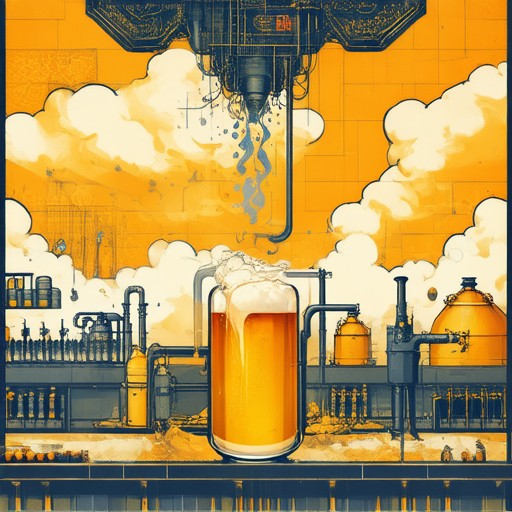
What Are the Primary Steps Involved in the Beer-Making Process and Why Are They Crucial?
The beer-making process, also known as brewing, consists of several critical steps that work together to transform raw ingredients into a refreshing and flavorful beverage. Understanding these steps and their importance is essential for appreciating the complexity of craft beer production.
- Malting :
The process begins with malting, where barley kernels are germinated and dried. This step converts starches into sugars, giving the beer its base sweetness and body. Malting also introduces enzymes that break down proteins and other components, ensuring a smooth texture in the final product. - Brewing :
During the brewing process, water is combined with malted grains and heated to boil. Boiling not only sterilizes the mixture but also removes impurities that could affect the flavor. The hot wort is then cooled before proceeding to the next step. - Fermentation :
Fermentation is the most critical stage, where yeast converts the sugars into alcohol and carbon dioxide. This process also produces esters and other compounds that contribute to the beer’s aroma and taste. Different yeast strains yield unique profiles, ranging from fruity to earthy notes. - Conditioning/Maturation :
After fermentation, beer undergoes conditioning, often involving cold storage. This step allows the flavors to develop further and ensures the beer’s clarity and stability. In some cases, additional processing like filtration or carbonation is applied to enhance the drinking experience.
Why These Steps Are Crucial:
- Consistency : Each step ensures uniformity, making every batch of beer consistent in flavor, aroma, and appearance.
- Quality : Proper execution of these processes guarantees a safe and high-quality product free from contaminants.
- Flavor : The interplay of these steps creates complex flavors that appeal to a broad range of tastes.
The innovation in these steps has driven the growth of the craft beer industry, allowing brewers to experiment with unique ingredients and techniques. By understanding the beer-making process, both casual drinkers and enthusiasts can appreciate the craftsmanship behind every sip.
Key Steps in the Beer-Making Process
The beer-making process, often referred to as brewing, involves several critical steps that transform raw materials into a refreshing beverage. Here’s a breakdown of the primary stages:
- Malt Preparation :
- Malt, typically made from barley, undergoes germination and kilning to convert starches into fermentable sugars. Different roasting levels result in varied flavors, from subtle to robust.
- Boiling :
- Malted grains are boiled with water to extract sugars and flavors. Hops are added during this stage to introduce bitterness and aromatic compounds, contributing to the beer’s balance.
- Fermentation :
- Yeast is introduced to convert the sugars into alcohol and carbon dioxide. The type of yeast used can significantly influence the beer’s character, ranging from fruity to earthy profiles.
- Conditioning :
- After fermentation, beer undergoes conditioning, often involving cold storage to clarify it and enhance its mouthfeel. This step also reduces foaming and prepares the beer for packaging.
- Packaging :
- Beer is packaged in various forms, including bottles, cans, or kegs, depending on its intended market and consumption setting. Freshness and preservation are key considerations during this phase.
Each step plays a vital role in ensuring the final product meets taste, aroma, and visual standards, making the beer-making process both art and science.
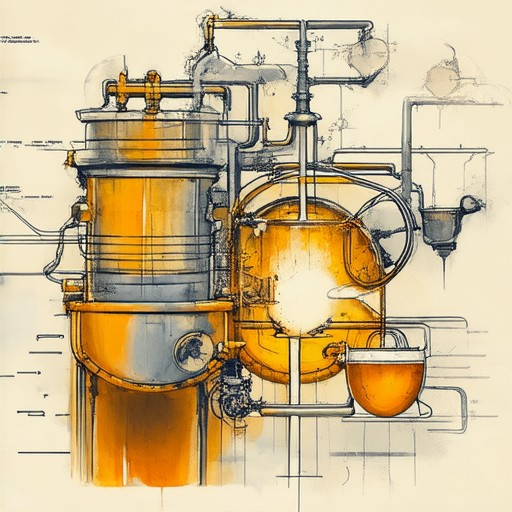
What Are the Main Steps Involved in the Beer-Making Process?
The beer-making process, also known as brewing, involves several key steps to transform raw materials into a refreshing beverage. Below is a detailed breakdown of the primary stages:
- Malt Preparation
- Malt is the backbone of beer, consisting primarily of barley. During malting, the starches in the barley are converted into sugars, which will later be fermented into alcohol. Malt can be malted (germinated and kilned) or unmalted (used for flavor in smaller amounts).
- Boiling
- In the boil house, water is brought to a rolling boil. Hops are added during this stage to provide bitterness and flavor. The wort (the mixture of water and malt extract) is boiled until it reaches around 65 IBU (International Bitterness Units), depending on the style of beer.
- Fermentation
- After cooling, the wort is transferred to fermentation tanks. Yeast is added to convert the remaining sugars into alcohol and carbon dioxide. This process typically takes 7-14 days, during which the temperature is controlled to optimize flavor development.
- Conditioning
- Once fermentation is complete, the beer undergoes conditioning. This includes removing any residual yeast, clarifying the beer to make it visually appealing, and introducing carbonation to create the familiar fizz.
- Packaging
- Finally, the beer is filtered and packaged. It may be pasteurized to extend its shelf life before being distributed to stores or served in pubs.
These steps ensure that the final product is rich in flavor, aroma, and character, offering a satisfying experience for beer enthusiasts.



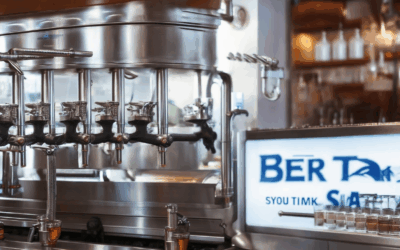
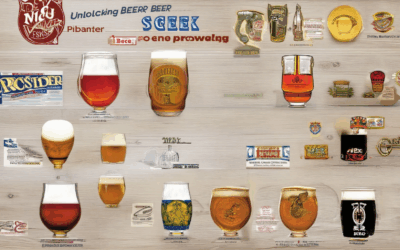
0 Comments